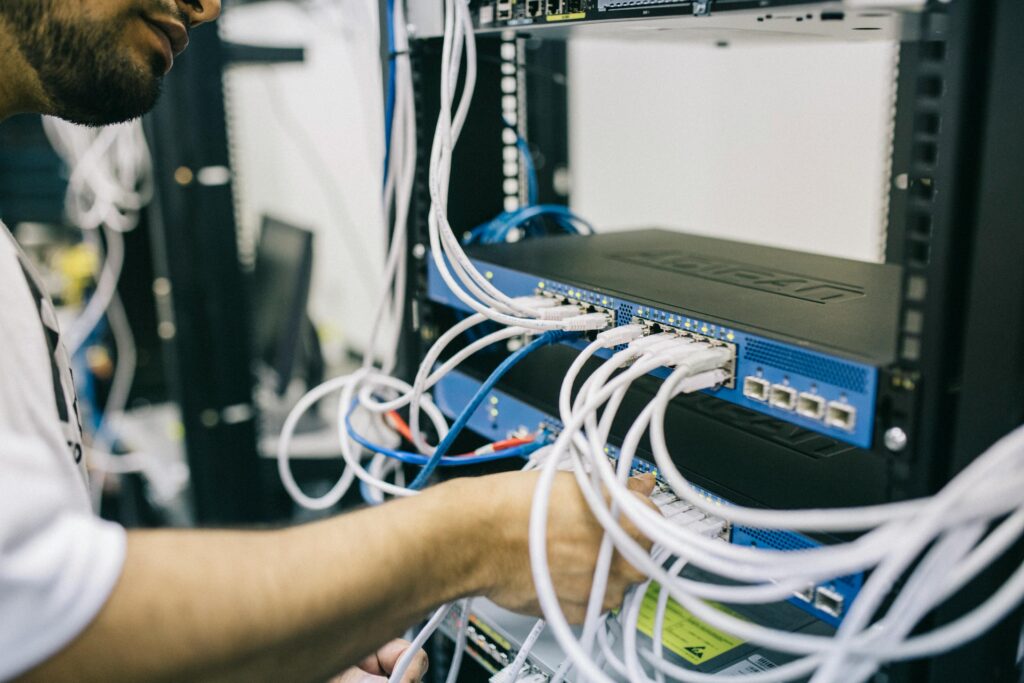This year is the massive roll-out of 5G, which promises—once it hits critical mass—fiber-like performance over wireless devices. One of the most significant impacts of this technology will come from IoT devices that are directly or indirectly connected via a 5G wireless link. This is because all you will need for installation is power, and you will not have to run cable for the internet connection. This will make this ideal for high bandwidth devices like cameras that are used to secure cities, offices, and homes. Also, when coupled with battery backup, the challenge of disabling these devices goes up substantially because an attacker will not be able just to disconnect the power or cut a data transmission line. They will have to access each camera physically.
Cameras that also can sense heat are increasingly being brought into play to fight the COVID-19 pandemic. Being able to deploy these cameras quickly could allow offices and municipalities to ramp up more quickly to protect people providing, potentially, for a faster return to work.
Let us talk about that this week.
Qualcomm Announces -Efficient NB2 IoT Chipset
This week Qualcomm announced their NB2 IoT Chipset, which promises to massively change what you can do with WAN connected devices. The advantage of connecting to the WAN rather than Wi-Fi or any wired technology is that cell towers tend to be more robust. These sites are also highly redundant (meaning if one does fail, you fail over onto another tower), and they generally aren’t connected to the place where the device is located. So a localized power outage—if the source of power is the battery or it has a battery backup–won’t disable the widget.
This capability is particularly handy for sensors that are used to catch thieves or report on the localized problem, like a fire or explosion that might also take power out. By using a WAN connection, it also significantly simplifies installation because you generally just have to plug the device in which it could be pre-configured by the vendor, IT, or even the manufacturer—resulting in a true plug and play experience.
The 5G Accelerator
Now you could do this with 4G, but it is a less robust, lower bandwidth, and far less reliable technology in that it doesn’t have the range, the performance at the edge, nor the ability to better go around or through obstructions. And the fees under 5G are expected to be far more palatable than the 4G charges were for IoT devices, making it potentially less costly (though this still needs to be proven out).
So, you get a massive amount of additional bandwidth, generally higher security, and a more reliable result, meaning you can better depend on the sensor or camera to do the job you need to be done regardless of the weather.
Camera Advantages and COVID-19 Pandemic
The significant advantage of cameras is that you should be better able to conceal them. Often, in a theft, the first thing the thieves try to do is identify and disable the cameras, so there is no record of the robbery. They’ll also attempt to disable the alarm. Still, many have WAN backups, and virtually all have battery backups, so that means finding the alarm control box and disabling that without triggering a WAN alert that the box is being tampered with or triggering an unseen sensor.
Once you go to a WAN solution, though, you could virtualize the alarm box, connect the cameras to the cell towers via-5G and make it nearly impossible to disable the now virtualized system from the site. This would potentially even slow down professional attackers. Though, I expect that you’d want to put up some dummy cameras that the thieves would see to keep the thefts down as a deterrent. And, if the thieves are motivated, give them something to try to disable that had no impact on your ability to monitor and report the theft attempt in real-time.
But one of the real advantages right now is cameras with the ability to identify people with a fever are being used effectively in Asia right now as that region is being opened back up in the wake of the COVID-19 outbreak to identify those that are sick and symptomatic. This allows security to quickly identify a threat before they can enter the building and infect the occupants, potentially significantly reducing the risk of a second or third spike in those countries. By making these cameras 5G WAN cameras, they would only need power, and you, in theory, could set them up in minutes and move them as is necessary to any place where there is power without having to wire them into a network.
Think of being able to deploy them in restaurants or community areas rapidly. They could even be funded by the government, who, in a few days, could cover large areas of a city and aggressively quarantine anyone that is identified as symptomatic. This video showcases how useful such a quarantine protocol could be.
Wrapping Up
Being able to deploy high-bandwidth sensors during a disaster or pandemic rapidly could be a game-changer in terms of mitigating the related damage. Qualcomm’s NB2 IoT Chipset could go a long way to providing the kind of coverage we need to combat pandemics, disasters, and criminals more effectively. Now, if we can just get to critical mass on the 5G back end, we will begin to see the collective benefits.
- The Human Element: HP’s Latest Security Report and My Near-Miss with a Digital Predator - July 11, 2025
- The Mighty Mini: Why HP’s Z2 Mini G1a Workstation Is the Unsung Hero of AI Development - July 7, 2025
- The HP OmniBook X Flip 2-in-1 16-Inch: Your New Digital Swiss Army Knife (Now in Glorious Atmospheric Blue) - June 25, 2025



